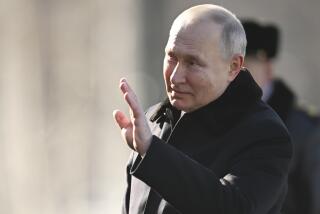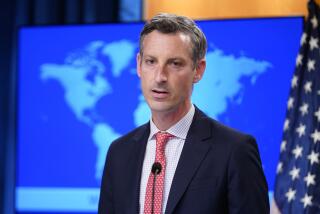Policing Arms Treaties May Cost Billions
- Share via
NEW ORLEANS — As prospects for new arms agreements increase, experts here warned Saturday, the cost and complexity of verification systems to police those treaties will grow rapidly and some of their techniques may be not be worth the money.
A total verification bill approaching $1 billion a year is not out of the question by the end of the decade, experts estimated. This is assuming all of the nuclear, conventional and chemical weapon negotiations bear fruit, and that Congress and the Administration continue to demand the same level of intrusive, detailed inspections of Soviet facilities that they have in the past.
But Dr. Roger Hagengruber of the Sandia National Laboratory, one of several experts on verification who addressed a meeting of the American Assn. for the Advancement of Science here, forecast “incredible inertia against spending $1 billion to verify a $40-billion system” of weapons involved in such agreements.
The existing U.S.-Soviet treaty that eliminates intermediate-range nuclear (INF) missiles costs $25 million to $30 million per year to verify, according to Pentagon budget figures.
The anticipated strategic arms reduction treaty (START) has at least four times more provisions than the INF agreement and will presumably cost at least $100 million a year to police, verification experts estimated.
U.S. and Soviet inspectors have established a so-called “perimeter and portal” monitoring enclosure around one INF missile plant in each country, for example. In the START treaty, at least 10 factories and perhaps 20 or 30 factories will be policed, according to Dr. Sidney N. Graybeal, chief scientist of the consulting firm Science Applications International. Policing an agreement cutting conventional forces in Europe will be complex as well as costly, with 23 nations taking part, seven from the Warsaw Pact and 16 from NATO. A verification system will check on the pledged reductions in men, tanks, artillery, armored personnel carriers, helicopters and fixed-wing aircraft, presumably for a decade or more.
Further away, a chemical warfare treaty will cost hundreds of millions of dollars per year, plus an estimated 15% loss in production due to on-site inspections, according to Dr. David W. Dorn of the Livermore National Laboratory.
Some inspection equipment used by U.S. monitors to police the INF treaty seem unduly sophisticated and costly, the experts said, and some techniques planned for use in the START treaty may not be cost-effective.
For example, a huge X-ray machine costing over $6 million is being installed by U.S. on-site inspectors to monitor the size of Soviet missiles emerging from a plant at Votkinsk. To do the same thing at a Utah plant they monitor, the Soviets use a long pole with graduated length markings and a flashlight, Hagengruber said.
Both work, he said. The X-ray unit can measure key dimensions far more accurately and check for other deviations that may show cheating, he said, but seems superfluous in the present climate of U.S.-Soviet relations.
For the future, Graybeal suggested that the United States propose “short notice inspections” by human inspectors at weapons factories rather than establish permanent perimeter and portal monitoring networks with X-ray scanners around them.
More to Read
Sign up for Essential California
The most important California stories and recommendations in your inbox every morning.
You may occasionally receive promotional content from the Los Angeles Times.













